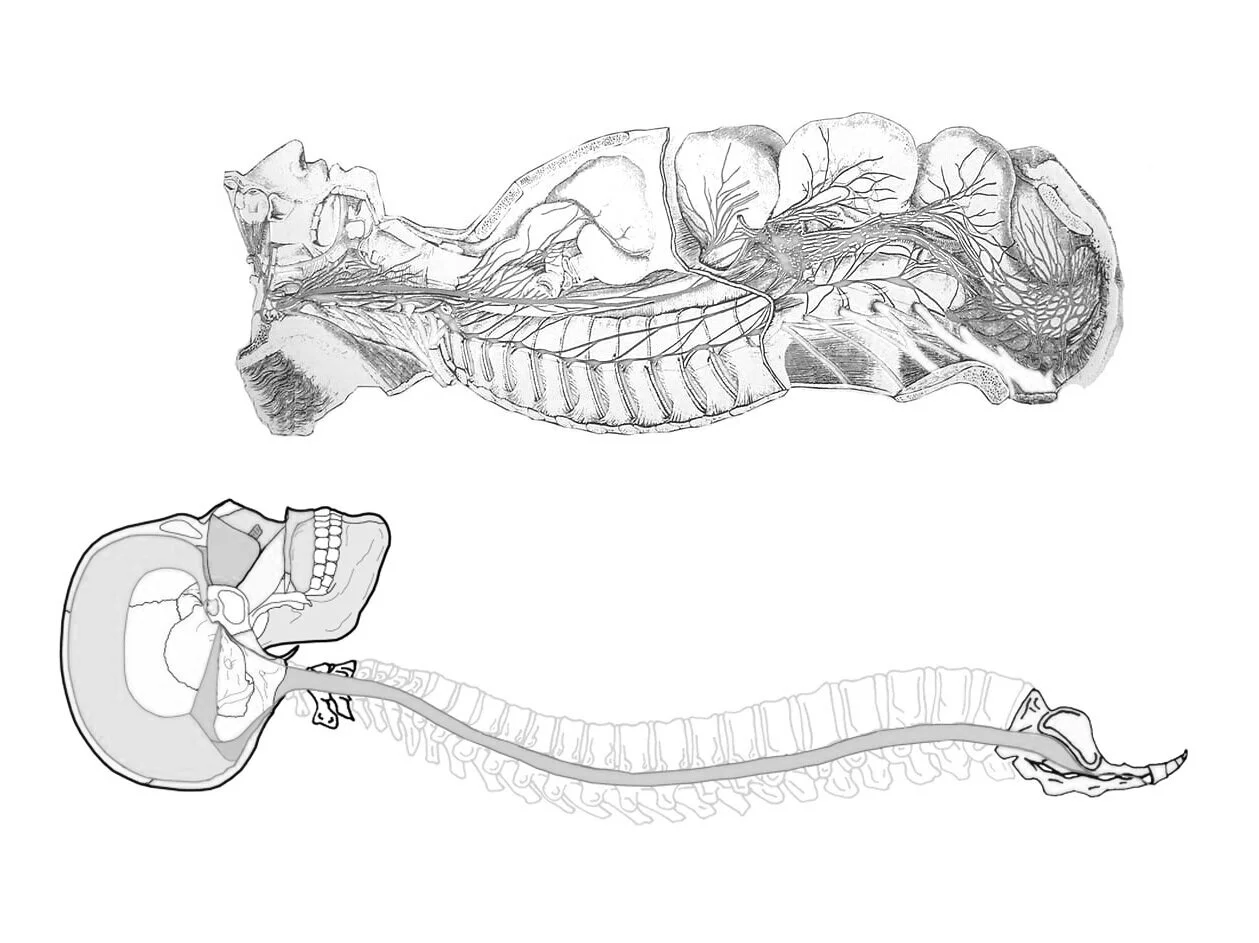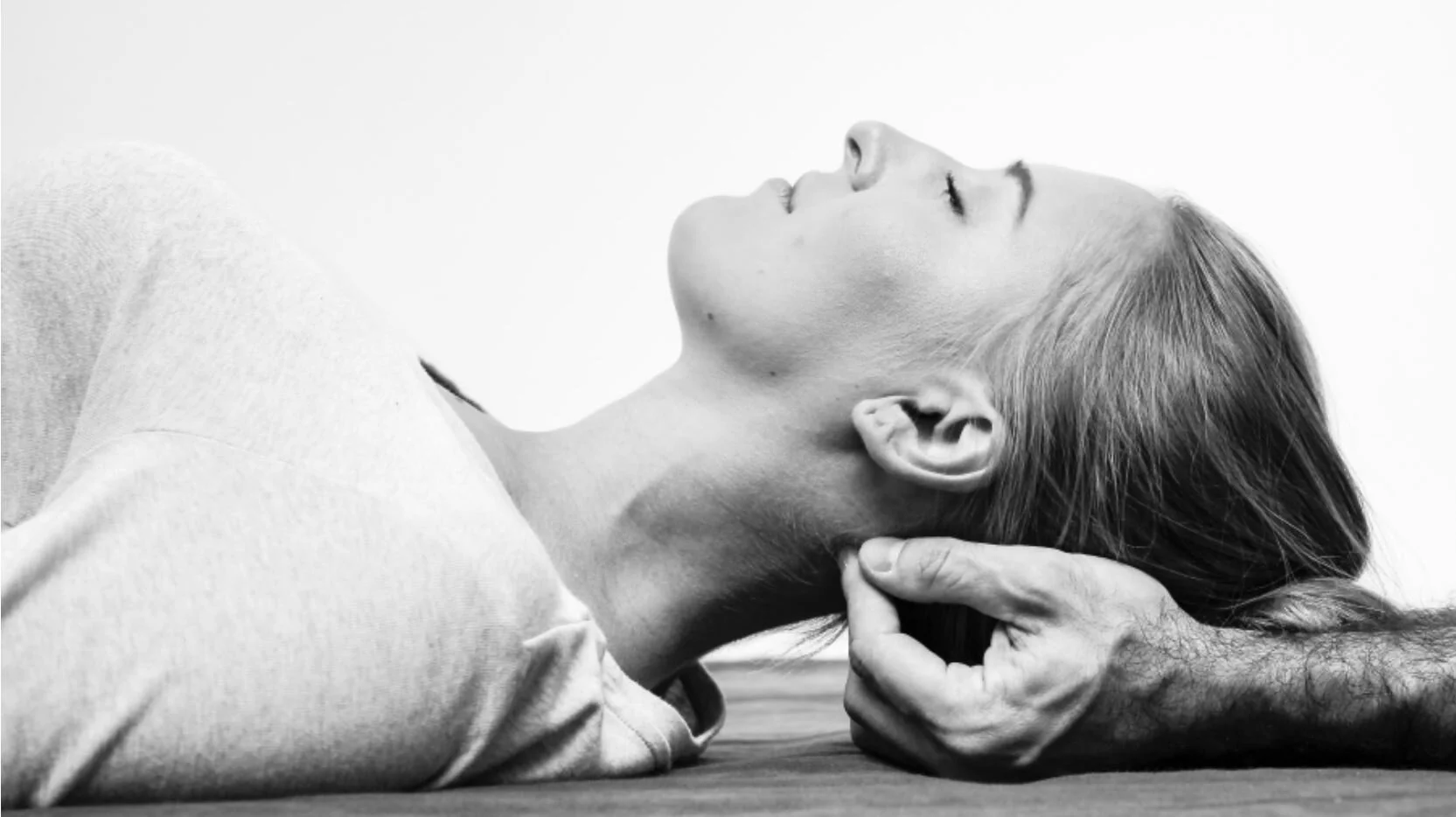Craniosacral Therapy
Reorganizing the Body
what is craniosacral therapy?
Craniosacral therapy (CST), is a holistic form of treatment that originated with William Sutherland, an American osteopath of the 1930s and then further developed and advanced by osteopathic physician, clinical researcher and Professor of Biomechanics John E. Upledger, following extensive scientific studies from 1975 to 1983 at Michigan State University. CST addresses the craniosacral system. This system includes the cranium, spine, and sacrum which are connected by a continuous membrane of connective tissue deep inside the body, called the dura mater. The dura mater also encloses the brain and the central nervous system. The skull is not a single piece of bone, but consists of several bones that meet at seams; and the cerebrospinal fluid that bathes the brain and spinal cord has a natural rise-and-fall rhythm. Contemporary craniosacral therapists practice manipulation not only of the skull, but of the meningeal membranes that cover the brain and the spinal cord, and facial bones.
craniosacral system
CST is a gentle, hands-on method of evaluating and enhancing the functioning of a physiological body system called the craniosacral system - comprised of the membranes and cerebrospinal fluid that surround and protect the brain and spinal cord. Using a soft touch generally no greater than 5 grams, or about the weight of a nickel, practitioners release restrictions in the craniosacral system to improve the functioning of the central nervous system.
The Method
The therapist gently palpates, or presses, the skull and spine and "listens" to the cranial rhythmic impulse, or rhythmic pulsation of the cerebrospinal fluid, with his or her hands. Interruptions of the normal flow by abnormalities caused by tension or by injuries are diagnostic clues to the practitioner. Once he or she has identified the cause of the abnormal rhythm, the skull and spinal column are gently manipulated to restore the natural rhythm of the cranial impulse.
Craniosacral therapy in action
By complementing the body's natural healing processes, CST is increasingly used as a preventive health measure for its ability to bolster resistance to disease, and is effective for a wide range of medical problems associated with pain and dysfunction, including:
Migraine Headaches
Chronic Neck and Back Pain
Motor-Coordination Impairments
Colic
Autism
Central Nervous System Disorders
Orthopedic Problems
Infantile Disorders
Learning Disabilities
Chronic Fatigue
Emotional Difficulties
Neurovascular or Immune Disorders
Post-Traumatic Stress Disorder
Post-Surgical Dysfunction
Concussions and Traumatic Brain Injuries
Alzheimer's Disease and Dementia
Spinal Cord Injuries
Scoliosis
Stress and Tension-Related Problems
Fibromyalgia and Connective-Tissue Disorders
Temporomandibular Joint Syndrome (TMJ)
CST is not recommended in conditions such as:
Acute aneurysm
Recent skull fracture
Cerebral haemorrhage
Severe bleeding disorder
If you are unsure whether this therapy is safe for you, consult your physician before opting for a CST session.


